Growing your own fruits and vegetables is a joy, and not something that is just for those who have big garden and space for produce. For those with small gardens, or even just a balcony, there are ways to grow tasty produce. It all about maximising the space you have and finding creative ways to sow and grow! Here are some top tips on growing food in small gardens.

A small area, such as a patio or balcony can actually be surprisingly productive when it comes to growing produce, and you can make use of all available space by using pots and planters, making use of vertical walls, and using hanging containers to grow a variety of foods.
Choose Herbs and Salads
Herbs are great plants to grow if space is at a minimum. You can put them in a variety of containers and they will grow happily with little attention.
To get the most effective use out of a small area, you can use the vertical space of fences and walls to grow produce.
Everyday household guttering makes for a fabulous salad garden that you can really cram with seasonal lettuces, other salad leaves and radishes. Make sure you choose guttering that has a decent depth, so your produce has more room for its roots to grow.
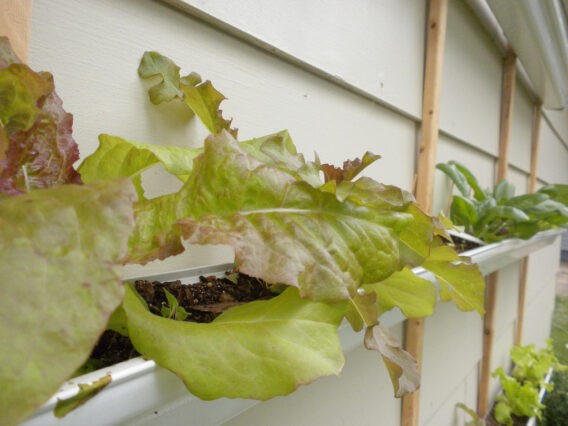
How to make a Salad Gutter Garden
Cut a length of deep household guttering to the required size and drill small drainage holes every couple of inches or so at the bottom.
There needs to be something at the end of each length to prevent soil from washing straight out, and the easiest option is to buy the corresponding stop-ends for the guttering. These are pieces of plastic that clip on, and they cost less than a pound. Or, alternatively you can use a piece of shaped ply-wood and glue it to the end.
Fix it to the fence or wall using brackets, again these are cheaply available from any DIY or builders’ merchants. Place a few handfuls of gravel along the guttering and spread out evenly to help with drainage. Fill the guttering with compost and either sow seeds directly or plant out seedlings.
For maximum production, you can plant closely, and this works well in a gutter garden. Closely packed plants compete for room and light, and this means that once you pick a few leaves, something else rushes to make the most of the new gap. Soon, the guttering will be bursting with leaves that keep growing the more you pick.
Window Boxes and Hanging Baskets
You can grow a surprising amount in a window box. Try garlic bulbs, herbs, lettuce, or edible flowers. Window boxes can be bought or made to any depth you require, making them a versatile planter for crops. However, it is probably better to go for smaller growing produce, as you still want to see from your window!
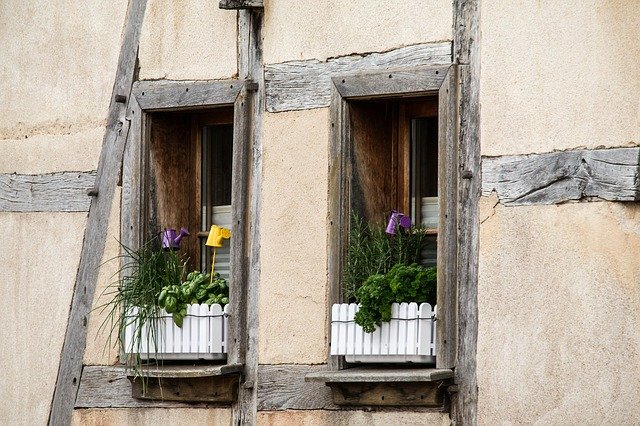
Hanging baskets also look attractive, and can be used for crops such as trailing tomatoes. It is important to keep them extra well-watered and hanging baskets can dry out quickly.
Walls and Fences
Most small gardens have walls or fences, and these are ideal for growing climbing plants such as runner beans, peas, French beans, or even a well-managed grape vine!
Growing Fruit Trees in small Spaces
Fruit bushes and trees can be grown in any garden, even small ones! Where space is a problem, fruit trees can be trained to grow in shapes such as fans, cordons or espaliers. These shapes, when grown next to a wall or fence, take up very little room and are ideal for boosting the harvest from smaller gardens.
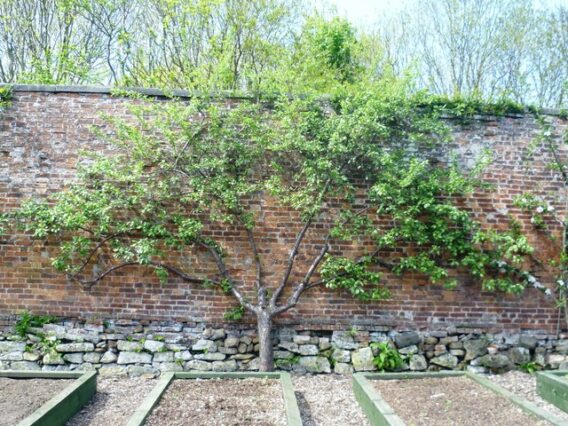
If you have a south facing wall, make the most of it by training fruit trees against it. In a sunny yard, it is even possible to grow fruits such as nectarines, peaches and apricots here in the UK, although for more reliable fruit, fan shaped apple or plum trees work well on walls.
Cordon fruit trees are another true space saver and one of the simplest shapes to get started with. It has one straight stem that is trained to grow in a diagonal direction, either supported by a wall or by posts and wire. It has short spurs each side of the stem that bear fruit.
A benefit of growing fruit trees as cordons is that you can fit many different trees in a small space, as each tree only needs to be around 3 feet apart. Any fruit tree that can bear fruit on short side shoots is suitable for cordon training.
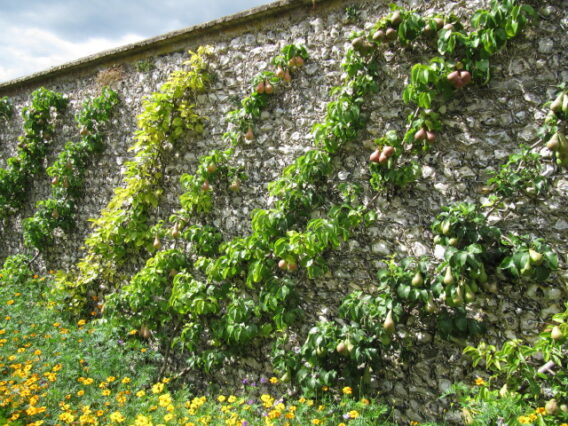
Espalier trees are trained to have several horizontal branches, again either supported against a wall or on wires. One fantastic benefit of training fruit trees as espaliers is that you can use them to form an attractive fence or screen.
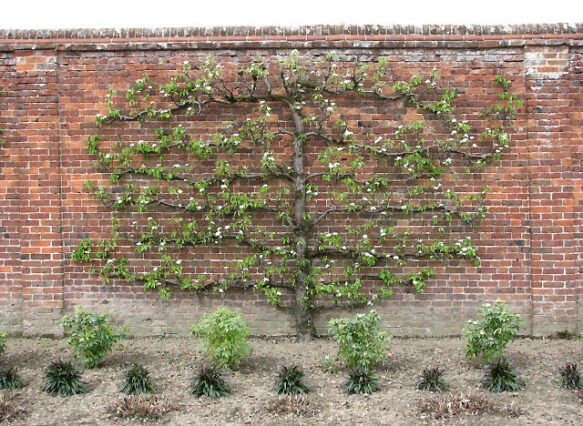
Dwarf pyramid trees grow to a compact size, usually no more than 7 feet in height and a spread of approximately 4 feet, and are good for smaller gardens.
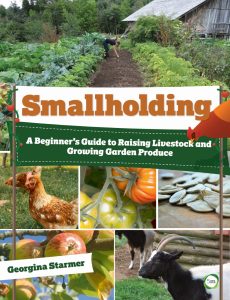
If you like the idea of growing your own food, or if you are thinking about keeping a few chickens for eggs, you may like my book on smallholding for beginners.
Anyone can be a smallholder because it is all about putting food on the table that you have grown or raised yourself. If that sounds like your cup of tea, read some reviews of Smallholding – A Beginner’s Guide to Raising Livestock and Growing Garden Produce.
If you have any ways you like to grow in small spaces, please add your comment. Good luck with your crops!
